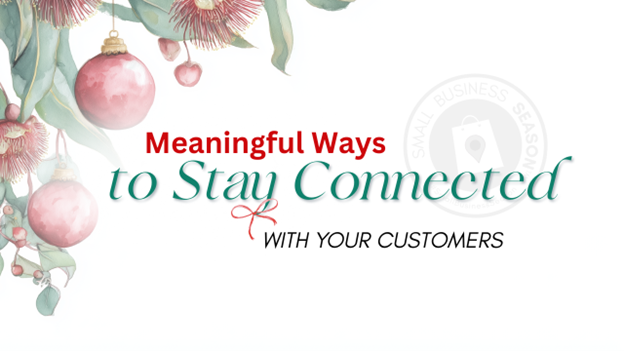Is AI Ushering in the Death of the Blog?
If you’ve ever spent any time creating or consuming content, you have either written or read a piece that proclaims some marketing trend is dead or something is “king.” Be it a social media platform, marketing activity, way of doing things—one thing is always going out of fashion, and something is lauded as taking its place.
This article is no different. Today, we’re asking the riveting question—Are blogs dead (or dying) and can we blame AI?
Of course, I had to turn to AI for the answers. First, let’s see what AI has to say and then I’ll give you my marketing take.
Video Killed the Radio Star AI Killed the Blogger
According to AI, blogs are not dead so our question about AI killing blogs doesn’t appear to be a valid one. However, how valuable will written content be when it all starts to sound the same? If you are using AI to write your business blog, make sure you’re doing the work to help it understand your blogging goals and tone. If all blogs begin to sound the same, the format will surely die (my prediction not AI’s).
In fact, AI writes that blogs are thriving in many ways. Here’s why:
- Blogging is still a popular format: Millions of (7.5, to be exact) blog posts are published every day, and readership remains strong. (Out of the 5 billion people using the internet daily, 77% say they read blogs on a “regular” basis.)
- Blogs drive traffic to websites: Blogs can attract visitors who are interested in your niche, products, or services. Well-written and informative blog posts can improve your website's search engine optimization (SEO), making it easier for potential customers to find you online.
- Blogs establish authority: By consistently sharing valuable content, you can position yourself as an expert in your field. This can build trust and credibility with your audience.
- Blogs foster community: Blogs can create a space for conversation and engagement with your audience. This can help you build relationships with potential and current customers.
Always the contrarian, I must point out that blogging does take time (even when you use AI to write it).
Now that we can breathe a sigh of relief that blogs aren’t dead, let’s focus on whether they are worth the time investment as part of your marketing strategy.
Return on (Time) Investment and SEO
While starting and maintaining a blog does require a sizeable investment of time (or resources if you pay someone to do it for you), the potential return can be significant when you factor in the following:
- SEO: Search engines prioritize fresh, relevant content. Regularly updating your blog with high-quality posts can improve your website's ranking in search results, leading to increased organic traffic. This, in turn, can bring in more organic leads and sales.
- Lead generation: Blog posts can be used to capture leads through email sign-ups or calls to action.
- Brand awareness: A well-maintained blog can help to increase awareness of your brand and what you offer.
- Monetization: If you build a strong following, you can incorporate ad revenue and affiliate marketing (for products and services you believe in) and make even more revenue on your posts.
Should I Spend Time on a Blog?
The answer depends on your specific goals and resources. If you have the time and expertise to create valuable content, a blog can be a powerful tool for growing your business. However, if you don't have the bandwidth to create high-quality content consistently, it may be better to focus on other marketing efforts. After all, your blog won’t be successful if it’s just one large advertisement for your business. You want to help educate, inform, and entertain your audience (or at least help them get to know you better). Buy, buy, buy, isn’t going to get you there (no matter how catchy that boy band song from the 90s is).
But that’s not to say you shouldn’t blog. You just need to ensure that the time you spend is worth it.
Here’s how you do that:
Making a Blog Worth Your Time
- Focus on quality: Create informative, engaging content that your target audience will find valuable.
- Optimize for SEO: Use relevant keywords, internal links, and meta descriptions to improve your blog's search ranking.
- Promote your blog: Share your posts on social media, email newsletters, and other channels.
- Track your results: Use analytics to measure your blog's performance and identify areas for improvement. Keep close attention on popular topics and how you might dive deeper into them for additional views.
Blogging Away from Home
While most marketers will tell you that your website is the best place for your business blog (since you own it and it’s a great way to drive traffic to your site), there are reasons to go elsewhere—such as revenue, pursuit of a new audience, or desire to try a different approach or strategy. Additional considerations include your industry and your goals for your blog.
Many bloggers are using alternative blog homes such as:
- Medium
- Substack
- Industry blogs
- Guest blogging for influencers
- Chamber of commerce blogs or newsletters
These third-party locations can bring a new audience into your business, and some offer the possibility of earning blog income. They also can be spots to try something new since they are removed from your existing audience. They may also be highly regarded and a post published there may set you up as a thought leader in your industry.
Deciding to stay home or blog elsewhere needn’t be an all or nothing approach. You can write a blog a month for other sources and use it to reach out to more readers. Most alternative blog spaces (meaning ones not owned by you) will allow for a link back, a bio, or by-line. So, there are SEO as well as audience reasons to spread out.
Remember, a blog is just one component of a strong marketing strategy. While many people argue that audiences don’t read these days, blogging for SEO is still a compelling reason to create new content for your website. Choose a post length and posting commitment that you can manage and use the written word to make humans and search engines interested in you.
Christina Metcalf is a writer/ghostwriter who believes in the power of story. She works with small businesses, chambers of commerce, and business professionals who want to make an impression and grow a loyal customer/member base. She loves road trips, hates exclamation points, and is currently reading three books at once.
_______________________________________
Medium: @christinametcalf
Facebook: @tellyourstorygetemtalking
Instagram: @christinametcalfauthor
LinkedIn: @christinagsmith




